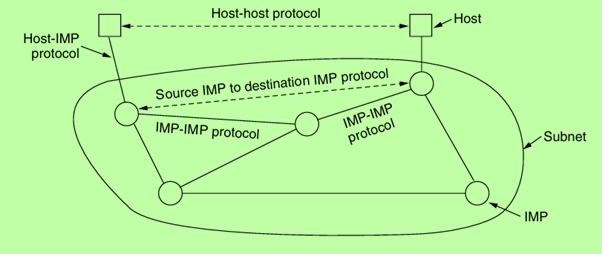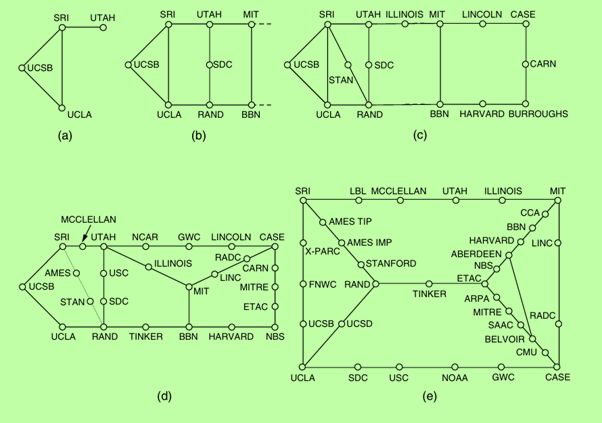ARPANET
The ARPANET (Advanced Research Projects Agency Network) was the first operational packet-switching network and a precursor to the modern Internet. Funded by the U.S. Department of Defense, it aimed to create a communication system that could withstand disruptions.
Key Features
→ Packet Switching: ARPANET utilized packet-switching technology, allowing data to be divided into packets that could be sent independently across the network. This approach increased efficiency and reliability.
→ First Nodes: The first four nodes of ARPANET were established in December 1969, connecting four universities. This initial setup demonstrated the feasibility of packet switching and laid the groundwork for future developments.
Architecture
The ARPANET’s architecture included:
→ Interface Message Processors (IMPs): These were the packet-switching nodes that connected hosts to the network. Each IMP was connected to at least two other IMPs for redundancy.
→ Host-IMP Protocol: Communication between hosts and IMPs was facilitated by specific protocols that allowed for reliable data transfer.
The ARPANET’s design and implementation were groundbreaking, setting the stage for the development of the Internet.
Conclusion
The ARPANET not only revolutionized communication technology but also paved the way for the interconnected world we live in today. Its legacy continues to influence networking protocols and systems, making it a pivotal milestone in the history of computer networking.
